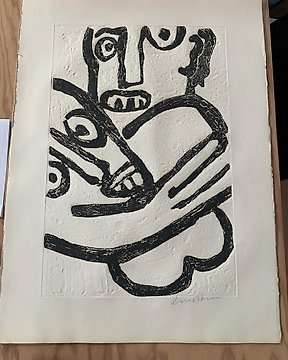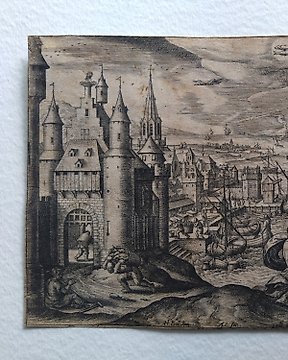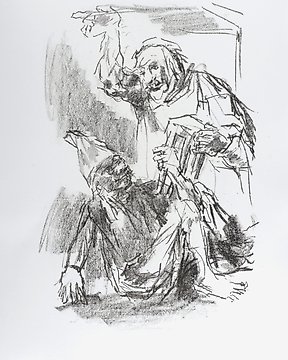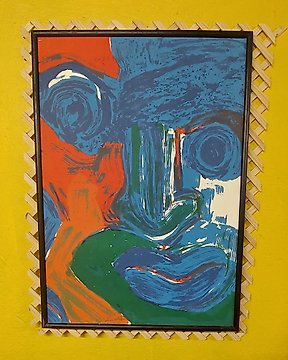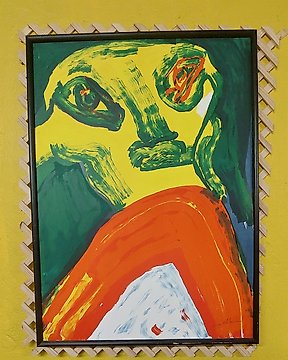Jan Sluijters (1881-1957) - Zich afdrogend naakt
Nr 22861487
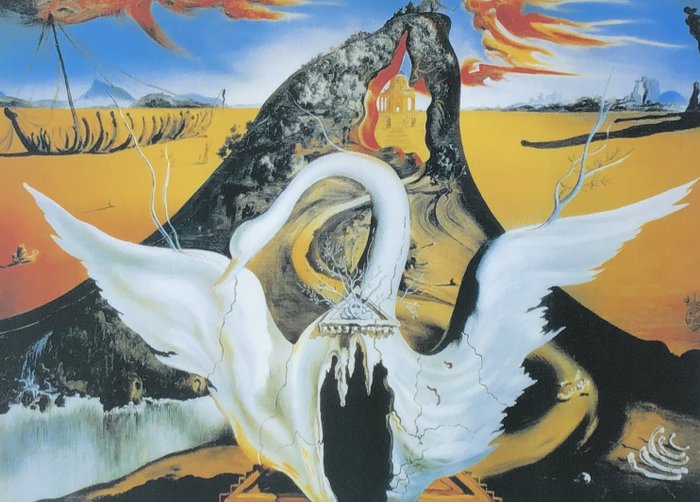
Salvador Dali - Bacchanale (1939)
Nr 22861487

Salvador Dali - Bacchanale (1939)
Salvador Dali (1904-1989) (after) - Bacchanale
Chromolithographic interpretation on hand-crafted fringed BFK Rives paper with watermark.
on the stone.
Numbered in pencil: MCMVI / MM.
Publisher's dry stamp: ateliers Jobin, Paris.
Stamp of the artist in the stone.
1939 for the original work
1988 for the lithograph.
Paper size: 50 x 65 cm
In very good condition.
It's in 1939 in New York, that Dali wrote a scenario for his first ballet, Bacchanal, based on an extract from the Act I of Tannhäuser by Wagner and also from the myth of Leda and the Swan.
From this ballet, Dali painted a part of the decor. History says he worked many hours on it and then put his signature at the bottom of the work.
Description:
We can divide the painting into three main plans. In the first plan is a white swan with supernatural dimensions. Its wings are attrofiees and his body is open, as if it was the entrance of a temple, because above this hole there is a part of an ancient monument which brings us back to the bacchanal, religious ceremonies celebrated in antiquity. As on many paintings of Dali, the lines of the head of the swan are blurred, erased. The swan is in an elegant, feminine posture. We find the male/female opposition which is common in the painting of Dali. The second plan is the largest. In the middle is a mountain in greyish colours with a valley that leads to the "inside" of the swan. We can deduce that the opening at the front of the bird would be the entrance to access the mountain, which could symbolise the dream with its altitude. The mountain is open at the top and you can see a temple far off. On the side, a carcass taking the form of a sailboat who ran aground, abandoned. Several bones make up the painting (carcasses, a jaw...). And it is also with the vegetation that grows on the swan that we found the theme of death which is very present in the work of the painter. Finally, in the background is the sky. The used blue is darker than on the other paintings of the artist. Shapes in warm colours (red, orange) seem to fly or even hover. Unlike the other paintings, the sky does not occupy the major part of the painting. But we find black ghostly shapes on the right side. These forms have a worrying aspect. They maybe symbolise the fear. The colours usually used are very characteristic: a hot/cold opposition, ochre and the inevitable blue of the sky. The swan is really highlighted with its very white colour and by the play of the shadows used for the mountain. The bird has a round, supple appearance at the top and could therefore symbolise femininity. But does this also means an access to the bacchanal? Does the bacchanals symbolise the dream, which is the main objective of the surrealists?
Przedmioty, które mogą Ci się spodobać
- 16+
Ten przedmiot został zaprezentowany w
Jak kupować w serwisie Catawiki
1. Odkryj coś wyjątkowego
2. Złóż najwyższą ofertę
3. Dokonaj bezpiecznej płatności

